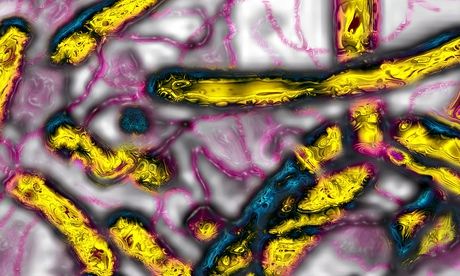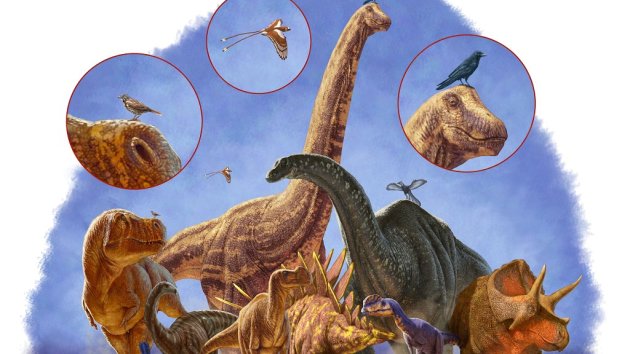Irish Taxes forcing our young & best educated to leave the country in droves Says Minister Hayes

)
BRIAN HAYES WANTS A MOVE ON TAX IN THE OCTOBER BUDGET.
Ireland’s higher rate of income tax is a major factor in the exodus of our young professionals, according to Junior Finance Minister Brian Hayes.
Mr Hayes has become the latest Fine Gael minister to demand a consecutive cut in the income tax in the next two budgets.
Confirmation that the coalition favours tax cuts over wage increases has proved a thorny issue in recent weeks, particularly among union leaders.
SIPTU president Jack O’Connor said last month that the “key to intensifying the momentum in the economy must be pay increases”.
A CAUTIOUS approach,
His remarks are at odds with those expressed by a number of government ministers who are very cautious about even discussing the prospect of wage increases.
Mr Hayes, who is Fine Gael’s European candidate in Dublin, said he believed tax measures in October’s budget must benefit those who pay the higher rate of income tax.
“Our current rate of tax is a huge disincentive for people to stay in Ireland and work and is encouraging a brain drain of young professionals,” Mr Hayes said.
“We need to keep our best and brightest here in Ireland making a contribution to their own country – not Australia, not Canada, not the US. Our very high tax rates on very modest incomes must be reversed. Young workers deserve a break.”
Government sources insist that Finance Minister Michael Noonan will examine how to “ease the burden” on middle income earners, particularly those with children.
Sources insist that changes to the Universal Social Charge (USC) are also on the table ahead of the budget.
But Mr Hayes said yesterday that while he favours changes to USC, the immediate focus must be on income tax.
His comments come just days after Mr Noonan clearly signalled that he is preparing to raise the band at which workers pay the higher rate of income tax.
At present, workers pay a marginal rate of 52pc on every euro earned above €32,800.
Mr Hayes, a Dublin-South West TD, said this represents a factor in the flow of young people who are being lost to emigration.
He said: “Trade union officials and other economic commentators have been calling for an economic stimulus. The best and fairest economic stimulus of all is a tax cut.”
Irish Central Bank insists people are switching bank accounts to escape fees
HOWEVER NEW FIGURES SHOW JUST ONE IN 10 SWITCHING BANK DESPITE a HIKE IN CHARGES


The Central Bank has insisted that more people are switching bank accounts in a bid to escape higher fees and bad service.
But the regulator also admitted this morning that despite a rise in the numbers moving accounts, the switching figures are still low.
Fewer than 11,000 people switched bank account in the second half of last year, using the Central Bank’s switcher code.
This is out of a total of 5.4 million current accounts. In percentage terms, less than 0.2pc of accounts were switched in the second six months of last year.
In the first half of last year 4,241 consumers moved bank.
This is despite higher fees and charges being imposed by the main banks and the decision of ACC and Danske Bank to pull out of retail banking here.
Director of Consumer Protection, Bernard Sheridan, said: “These new figures show that, while low, an increasing number of consumers are availing of the Central Bank’s Switching Code to manage the changeover when switching current accounts.
“Factors which appear to be influencing the choices that consumers are making include: changing fees and charges; service issues; and announcements regarding the withdrawal of current account providers from the market.”
The code is supposed to make it easier for consumers to move banks, and demands that the switch is completed within 10 days.
A total of 373 suspected abuse cases at Irish homes


Hiqa said it received 5,362 alerts of potentially harmful events in care homes. A total of 373 reports were made last year of alleged, suspected or confirmed abuse of older people in care homes.
The Watchdog Health Information and Quality Authority (Hiqa) said it received 5,362 alerts of potentially harmful events in care homes up and down the country during 2013.
Among them were 4,246 reports of serious injury to a resident.
But the most concerning figure involved the 373 instances of reported abuse in 195 out of the 566 care homes in either the state or private sector.
Phelim Quinn, Hiqa’s director of regulation and chief inspector of social services, said despite the high figures, safety and quality standards are improving.
But he warned: “It is clear from this report that there are areas where further improvement is required and we will focus on these areas as part of our continued regulatory activities.”
The Hiqa report is the first annual overview on the regulation of nursing homes since the rules were introduced more than four years ago.
Its report said inspectors carried out 814 checks of 565 residential centres for older people in 2013.
It recorded 293 notifications of outbreaks of infectious disease; 171 reports of unexplained absence from a home; and 95 reports of alleged misconduct by the care provider or a member of staff.
On abuse, Hiqa said its inspectors identified 303 actions needed to ensure homes complied with rules to prevent issues over residents’ finances in 174 of the centres.
Hiqa said it received unsolicited information 355 times relating to 213 centres last year, most of which came from concerned relatives of residents. Others came from staff in the care homes, health professionals visiting the homes to work and residents themselves.
Most of the information being relayed to inspectors centred on the quality and safety of care, staffing issues and other complaints associated with fees, discharge decisions and contracts of care.
Age Action said it was concerned about the high level of serious injuries reported by nursing homes and the notifications of abuse, which care homes are bound by law to report.
“The report not only highlights the great need which exists for an independent inspection authority, but also the need for nursing home management to improve their service when it comes to issues of health and safety and risk management,” spokesman Eamon Timmins said.
“This must involve training, supervision and strict adherence to the existing procedures and protocols.”
Issues were also identified with medicines in 325 care homes with changes required on the ordering, prescribing, storing and administering of drugs to residents and the handling and disposing of unused or out-of-date medicines.
Inspectors also looked at issues relating to food and found that more than half of the homes reviewed – 30 out of the 52 chosen for this area – were fully compliant in relation to food and nutrition.
It said there were only seven findings of moderate non-compliances and 15 minor non-compliances, such as a lack of choice or issues over staffing levels at meal times or small dining rooms.
Nursing Homes Ireland (NHI) said that of the 565 registered care centres and homes, one was forced to close last year.
“NHI recognises the critical role of Hiqa in supporting care provision and will continue to be proactive in engagement with the authority to continually drive improvements in care delivery for older persons in residential care,” the organisation said.
UK search police teams excavating sites in Portugal for Madeline McCann


Search teams are expected to start excavating a number of sites in Portugal as part of the investigation into the disappearance of Madeleine McCann.
Portuguese authorities are understood to have given permission for the search of several sites in Praia da Luz, where Madeleine went missing in 2007, aged just three.
The move comes just after the seventh anniversary of her disappearance on May 3 2007, part-way through a family holiday.
The request to search a number of sites is thought to be among a series of requests made by British detectives in connection with the search for Madeleine.
The excavations, which are expected to be conducted by forensic experts, are not thought to necessarily be in connection with a search for the youngster’s body or remains.
Detectives from Scotland Yard are expected to be in Portugal for the searches, but it is not thought that Madeleine’s parents Kate and Gerry will return to Praia da Luz.
Scotland Yard have refused to comment on reports about the latest development in the investigation.
The McCanns’ spokesman Clarence Mitchell said: “As always, we simply will not comment on operational details of Operation Grange, that is a matter for the Met Police.
“Kate and Gerry are being kept fully informed throughout.”
At the weekend, Mr and Mrs McCann thanked the public for their unstinting support at a prayer service on the seventh anniversary of her disappearance.
The couple were joined by around 100 well-wishers, friends and relatives for a low-key open-air service in the centre of Rothley, Leicestershire, which saw candles being lit for all children around the world who have been taken away from their parents against their will.
Mr McCann expressed his family’s gratitude that the Metropolitan Police team investigating Madeleine’s disappearance was now moving on to a “very active” phase in their investigation, saying: “They are chipping away and obviously there is new evidence so we are going to continue to hope that we will get a happy outcome.”
Earlier, Mrs McCann disclosed that she privately returns to the Portuguese resort where her daughter disappeared to “walk those streets” and “look for answers”, as she backed a revamped alert system triggered when missing children are kidnapped or their lives are at risk – known as Child Rescue Alerts.
Gut bacteria research could help regulate peoples weight and cholesterol


A Breakthrough research in the role gut bacteria have in regulating weight gain and cholesterol could lead to the design of probiotics for the control of obesity, high cholesterol, and diabetes.
That is according to researchers at the Alimentary Pharmabiotic Centre in University College Cork whose findings are published this week in the prestigious Proceedings of the National Academy of Sciences USA.
Dr Cormac Gahan, who together with Dr Susan Joyce, is leading the UCC team, said they had analysed a protein commonly made by gut bacteria that breaks down bile acids (chemicals produced in the liver) — and found that specifically increasing levels of this protein reduces cholesterol and weight gain in mice.
“We reasoned that in the gastrointestinal tract that if bacteria influence bile acids, they might have an influence on the host’s [mouse] weight gain and metabolism,” Dr Gahan.
“So we went about looking at it experimentally and we basically showed if bacteria can break down bile acids then it influences weight gain in mice,” Dr Gahan said.
However, even though they had shown that a specific mechanism exists by which bacteria in the gut can influence the host’s metabolism, Dr Gahan said they now needed to determine if the same mechanism existed in humans before embarking on the development of probiotics to target this mechanism to regulate weight gain or high cholesterol. Their research meant that they “now have the potential for matching probiotic strains with specific end-user needs”, Dr Joyce said. “Work is under way to determine how this system operates in humans,” she added.
Researchers in China have also looked at what impact gut bacteria have on people’s weight.
Their research has led them to believe that changing the type of bacteria found in the gut may be more effective at helping people to shed weight than cutting calories alone.
Incredible shrinking process helped the dinosaur’s survival


A DEPICTION OF DINOSAUR BODY SIZE EVOLUTION AND SHAPE OVER 170 MILLION YEARS
One of evolution’s greatest success stories is that of the Incredible Shrinking Dinosaur, scientists have revealed.
The reptiles that ruled the world for almost 200 million years never went away. At least some of them just got smaller and turned into birds.
Now researchers have shown that shrinking was key to survival for this group, which became one of the most diverse and abundant families of animals alive today.
Only those dinosaurs destined to be birds broke the lower body weight limit of one kilogram seen in their relatives.
Lead scientist Dr Roger Benson, from the Department of Earth Sciences atOxford University, said: “Dinosaurs aren’t extinct; there are about 10,000 species alive today in the form of birds. We wanted to understand the evolutionary links between this exceptional living group, and their Mesozoic relatives, including well-known extinct species like T rex, Triceratops, and Stegosaurus.
“We found exceptional body mass variation in the dinosaur line leading to birds, especially in the feathered dinosaurs called maniraptorans. These include Jurassic Park’s Velociraptor, birds, and a huge range of other forms, weighing anything from 15 grams to three tonnes, and eating meat, plants, and more omnivorous diets.”
Small body size may have been a vital difference that helped the ancestors of modern birds remain on Earth after other dinosaurs were wiped out 65 million years ago, say the researchers.
A huge asteroid impact off the coast of Mexico is generally thought to have brought the dinosaurs’ long reign to an end. However, many experts believe dinosaurs were already in decline when the meteor delivered the coup de grace that finished them off.
Together with Canadian colleagues from the Royal Ontario Museum, Dr Benson’s team estimated the body mass of 426 dinosaur species by measuring the thickness of their leg bones.
The scientists found that dinosaurs underwent rapid changes in body size shortly after they first appeared around 220 million years ago.
Thereafter only the evolutionary line leading to birds continued to change size at such a fast rate, and did so for a further 170 million years.
The study, published in the online journal Public Library of Science Biology, revealed that dinosaurs ranged in size from the 90 tonne Argentinosaurus – the largest creature ever to walk on land – to the bird-like Qiliania, which weighed 15 grams and was the size of a sparrow.
The team worked on the basis that if members of a family of related animals are similar in size, their evolution is likely to have been slow. On the other hand having close relatives that are very different in size implies fast rate of evolution.
“What we found was striking,” said co-author Dr David Evans, from the Royal Ontario Museum. “Dinosaur body size evolved very rapidly in early forms, likely associated with the invasion of new ecological niches. In general, rates slowed down as these lineages continued to diversify.
“But it’s the sustained high rates of evolution in the feathered maniraptoran dinosaur lineage that led to birds – the second great evolutionary radiation of dinosaurs.”
The bird ancestors kept experimenting with different and often radically smaller body sizes, allowing them to adopt new designs and adaptations more quickly than larger dinosaurs.
Other dinosaur groups became locked into narrow ecological niches from which they could not escape, say the researchers. This may have ultimately contributed to their extinction.
Commenting on the findings in the journal, doctors Daniel Moen and Helene Morlon from the Ecole Normale Superieure in Paris, France, wrote: “What explains why some groups of organisms, like birds, are so species rich? And what explains their extraordinary ecological diversity, ranging from large, flightless birds, to small migratory species that fly thousands of kilometers every year?
“(Benson and colleagues) find that body-size evolution did not slow down in the lineage leading to birds, hinting at why birds survived to the present day and diversified. This paper represents one of the most convincing attempts at understanding deep time adaptive radiations.”
No comments:
Post a Comment